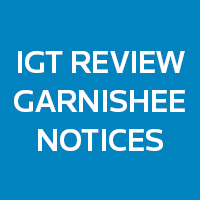
IGT Review Of ATO Garnishee Notices
As a consequence of the allegations aired by current and former ATO staff about the inappropriate use of ATO’s powers to issue garnishee notices, particularly to small businesses, on the Four Corners Program. The Inspector-General of Taxation (IGT) has now commenced an independent review to address these allegations to allay concerns of adverse impacts on the tax system.
Garnishee notices are the most common form of “stronger” actions used by the ATO to recover tax debt from taxpayers who are unwilling to work with them to address their debt, or repeatedly default on agreed payment plans. The notices are issued to third parties who are required to pay money, owed to the taxpayer, to the ATO to satisfy the taxpayer’s debt. The notices may require either a one-off payment or recurring payments for certain periods of time.
If you’re an individual, the ATO can issue garnishee notices to your employer, contractor, banks, financial institutions and building societies where you hold an account, and people who owe money to you from sale of real estate (ie purchaser, real estate agent and solicitors). If you’re a business, the ATO may issue garnishee notices to financial institutions where your business holds an account, trade debtors, and suppliers of merchant card facilities.
According to the Inspector-General of Taxation: “Cash flow is the lifeblood of small businesses and, if inappropriately disrupted, can have an unjustified and devastating effect on them. My investigation will examine the accuracy of the allegations made along with themes emerging from complaints to my office with the aim of finding improvements where necessary and restoring confidence in the system”.
In particular, the review will investigate allegations that the ATO gave directions to staff to issue standard garnishee notices in every case as a “cash grab” towards the end of the 2016-17 financial year. As well as the allegation that the ATO set targets for staff and assessed their performance based on the level of debt collected. It will draw on IGT complaints data, assess the relevant ATO systems including interviewing current and former ATO staff in debt recovery units across multiple locations, and seek to understand and assess the nature of any impact on affected taxpayers.
The terms of reference of the review include:
- understanding ATO’s strategies to manage tax debts by way of garnishee notices;
- policies and procedures for issuing garnishee notices, including the circumstances the ATO considers in cases of vulnerable small businesses and individuals;
- mechanisms present to ensure staff adhere to its garnishee notice policies and procedures;
- key performance indicators for both tax debt collection and staff performance;
- specific communications to staff regarding use of garnishee notices and associated KPIs at each location of its debt recovery units; and
- other relevant concerns or potential improvements identified during the course of the review.
Do you have a gripe?
If you’ve experienced what you think is unfair treatment by the ATO in terms of garnishee notices issued to your business or yourself, we can help you make a submission to the review. Contact us today.